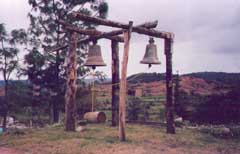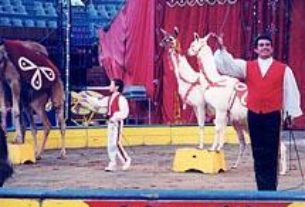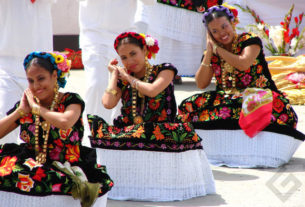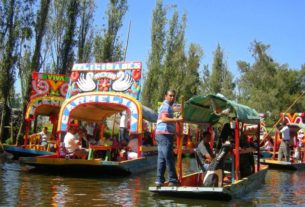
Santa Maria Tiltepec was once a thriving village, important enough for the conquering Spaniards to order a fine church built. The church still stands, a monument to the determination of the conquerors and the artistic and architectural skills of the indigenous Mixtec peoples who constructed it from drawings of other churches, brought over from the Spain. We are two hours west of Oaxaca city, 3,000 feet above our mile-high home, in an area known as the Mixteca Alta (the high Mixteca), land of the Mixtec people, one of the 16 identified tribes that live in the State of Oaxaca.
Today, the village is all but empty, a victim of natural and economic disasters. Almost all the men between the ages of 18 and 45, and many of the women, are gone in search of work. Mario is one of the few who have been able to remain, thanks to INAH, the ministry in charge of preserving the antiquities that form part of the patrimony of Mexico.
Mario has worked for INAH for 27 years, since he was 16. Starting as a laborer on his uncle’s team, he is now a foreman with anywhere from two to ten workers, mostly older local men who no longer care to travel very far. Short, broad shouldered and heavily muscled, Mario has been able, over the years, to remain at home, in the Mixteca Alta.
“Work is never certain”, he says. “We are here on a six-month contract. On this church, we have so far had three contracts, but not one after the other. In between, I have had contracts at four other sites. So, I have been working steadily, but there are no guarantees. It’s the way the contracts are let. INAH tries to spread the work around, so every village gets some attention, and some jobs.”
When asked why so many people went away, Mario walks to the edge of the hilltop on which the church rests, above the village. The view is spectacular, with mountains all around. “Look over there”, he says, pointing to the deeply eroded landscape around us. “See that red earth? You can’t grow anything there. Nothing at all. See the green patches in between? You can grow a few things there, but only during the rainy season. A week after the rainy season ends, there is no more water. Everything dries up.”
What happened? “There used to be forest here, but they came and logged it, maybe 60, 70 years ago. Then they brought the sheep and the goats. Soon, there was nothing to contain the runoff; nothing to hold back the soil. Now it is useless.
“Still, it is not a bad life here if you have money coming in. Look over there.” He points out a modern bungalow with 3 or 4 bedrooms, maybe a mile away. “They built that house from money sent back from the north. That one over there, too, and that one over there.”
And the one over there, with the roof fallen in? “They all are gone. There was no-one to look after it. I do not think we will ever see them again, unless their children come back to see where the parents grew up. More and more this is true. They used to always come back, for fiestas and family occasions, but now they are afraid. They are afraid that if they cross over, they will not be able to get back. They stay there because they are afraid.”
It begins to rain, and we repair to the doorway of the church. “I do not remember so much rain here. This year has been very rainy. On top of the two earthquakes (there was one in June that did a lot of damage in the Mixteca Alta, but received little notice from the outside world because it did not damage any urban areas), we have had to deal with this rain, which does not remain, but washes out even more of our top soil.”
But the presas (reservoirs) I saw coming up here, don’t they help? “They make it possible to grow small plots of vegetables and to water a small amount of livestock, but our villagers can only get a subsistence living from these small holdings. It is enough to live on, but not enough to thrive. Our children do not want to stay and work the land because it is too hard. And no-one can blame them, they are right.”
“You are a tourist”? Not exactly. I live in Oaxaca, and write about my experiences of Mexico.
“Then you should tell your people, especially your government, to treat us better when we come to your country to look for work. It should not be so hard for our friends and family to return to us when they can. The money they send is needed, but we also need to preserve our village life, and our ties with our loved ones who must go away from this red earth in order not to starve. We Mexicans, we like to go where it is green, where the food can be grown. We should not be treated like criminals for wanting to feed our families.”



